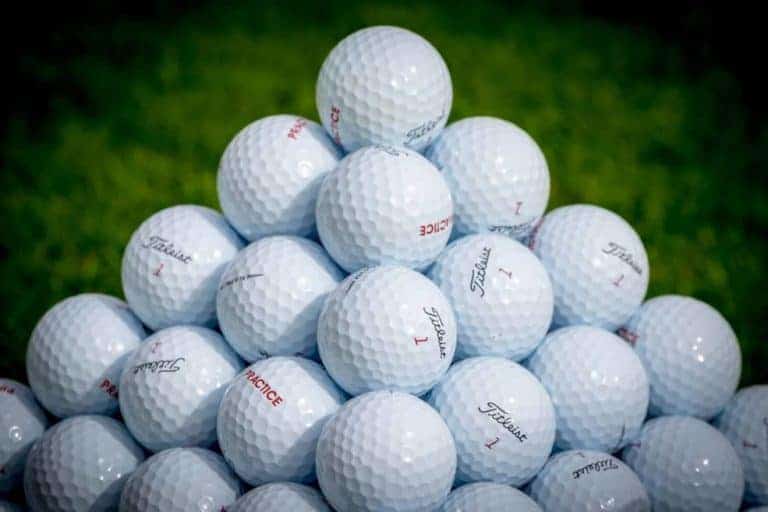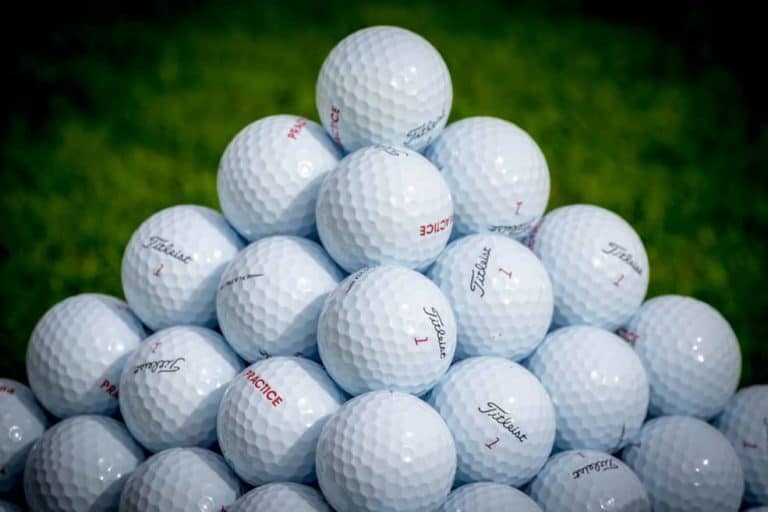The Importance of Choosing The Right Golf Ball for Beginners To Jumpstart Your Game
In the world of golf, selecting the appropriate equipment can significantly impact a player’s performance on the course. Among the essential tools in a golfer’s arsenal, the golf ball stands out as a crucial component that can make a noticeable difference, particularly for beginners. Let’s take a look at the importance of choosing the right golf ball for beginners.
To see special golf ball recommendations, check our 2023 guide.
How Choosing The Right Golf Ball For Beginners Will Impact Your Game
For beginners, the right golf ball can be the key to unlocking their full potential on the fairway. Golf balls are not one-size-fits-all; different models and constructions cater to diverse swing speeds, skill levels, and player preferences. Here’s how a well-suited golf ball can impact a beginner’s game:
1. Distance and Control: Golf balls designed explicitly for beginners often feature technology tailored to maximize distance. These balls typically have a larger core and lower compression, providing more power, increased ball speed, and enhanced distance off the tee. Having a ball that offers more control for approach shots and around the greens can greatly contribute to a beginner’s confidence and overall game improvement.
2. Feel and Feedback: Choosing the right golf ball can also affect a beginner’s feel and feedback. Softer golf balls are often recommended for beginners as they provide better feedback upon contact with the clubface, allowing beginners to learn how different shots feel on impact. This immediate feedback can help beginners understand their swing mechanics and make necessary adjustments more effectively.
3. Consistency and Forgiveness: Golf balls designed for beginners often prioritize forgiveness and consistency. These balls are engineered to reduce sidespin and minimize the effects of mishits, thereby assisting beginners in maintaining a more consistent ball flight and reducing the likelihood of drastic hooks or slices. By offering a larger sweet spot, forgiving golf balls can boost a beginner’s confidence and provide a more forgiving margin of error.
Related: The Ultimate Beginners Guide To Golf
The Evolution of Golf Ball Technology Over the Years
The golf ball has come a long way since its humble beginnings. Over the years, advancements in technology and materials have revolutionized golf ball design and performance. From the traditional gutta-percha ball to contemporary multi-layered constructions, let’s explore the evolution of golf ball technology:
Early golf balls, made of gutta-percha, featured a solid construction, offering limited distance and control. The introduction of rubber wound cores in the early 20th century improved performance, providing golfers with more distance and accuracy.
In the 1980s, the advent of solid-core golf balls sparked a new era in golf ball technology. The solid core, typically made of synthetic materials, enhanced resilience and improved distance, laying the groundwork for future developments.
In recent years, multi-layered golf balls have become the norm. Utilizing advanced materials and innovative designs, these balls offer a delicate balance between distance, control, and spin. Different layers in the construction contribute to achieving specific performance characteristics, catering to golfers of all skill levels.
Furthermore, technological advancements have allowed golf ball manufacturers to engineer balls with softer covers that provide a pleasant feel while maintaining durability and performance.
As golf ball technology continues to evolve, beginners can enjoy the benefits of these advancements, enabling them to improve their game and achieve more consistent results.
Frequently Asked Questions
How to Hit a Golf Ball for Beginners?
Hitting a golf ball properly requires correct stance, grip, and swing mechanics. Beginners should seek guidance from a golf instructor or professional to learn the fundamentals and practice proper techniques to maximize their chances of success.
Are Supersoft Golf Balls Good for Beginners?
Supersoft golf balls, known for their low compression and increased feel, are often considered suitable for beginners. The softer feel can offer better feedback and assist in building confidence and control.
Are Soft Golf Balls Better for Beginners?
Soft golf balls can be advantageous for beginners due to their enhanced feel and feedback upon impact. However, the best golf ball for beginners may vary depending on individual preferences and playing style.
What Are the Best Golf Balls for Beginners?
Several golf balls cater to beginners, such as the Titleist DT TruSoft, Callaway Supersoft, and Srixon Soft Feel. These balls prioritize distance, control, and forgiveness, making them excellent options for newcomers to the game.
How Far Should a Beginner Golfer Drive the Ball?
The distance a beginner golfer drives the ball can vary significantly. Factors such as strength, technique, and club selection contribute to driving distance. As beginners continue to practice and improve their swing, they can gradually increase their driving distance over time.
How to Choose a Golf Ball for Beginners?
When choosing a golf ball as a beginner, consider factors such as compression, feel, and forgiveness. Visit a local golf shop or consult with a professional to find the right ball that suits your swing speed, preferences, and skill level.
How to Drive a Golf Ball for Beginners?
Driving a golf ball effectively requires proper setup, a smooth swing, and generating power from the ground up. Take lessons from a golf instructor to learn the correct technique and refine your driving skills as a beginner.
Do Golf Balls Make a Difference for Beginners?
Yes, golf balls can make a significant difference for beginners. Choosing a ball designed for beginners can enhance distance, control, feel, forgiveness, and overall performance, helping newcomers to enjoy the game and improve their skills.
How to Hit a Golf Ball Straight for Beginners?
Hitting a golf ball straight involves aligning the body, aiming correctly, and developing a consistent swing path. Beginners should work on their fundamentals and seek guidance to understand and improve their swing mechanics for straighter shots.
How Far Should a Beginner Hit a Golf Ball?
A beginner’s average distance with a driver can vary greatly. As beginners develop their swing and gain experience, they can aim for a distance between 150 to 200 yards with their driver.
How to Chip a Golf Ball for Beginners?
Chipping a golf ball involves a shorter swing motion with a lofted club to hit the ball close to the green. Beginners should focus on proper technique, weight distribution, and practicing different shots to improve their chipping skills.
What Type of Golf Ball Should a Beginner Use?
For beginners, golf balls with low compression and soft covers are often recommended. These characteristics provide increased forgiveness, better feel, and distance, helping beginners acclimate to the game and build confidence.
What’s the Best Golf Ball for a Beginner?
While personal preferences may vary, popular golf balls for beginners include the Titleist DT TruSoft, Callaway Supersoft, and Srixon Soft Feel. These models offer a balance of distance, control, and forgiveness, making them suitable for newcomers.
What Type of Golf Ball Is Best for Beginners?
The best golf ball for beginners typically features a low compression, soft cover, and forgiving construction. These balls prioritize distance and control while providing a pleasant feel on impact.
How to Hit a Golf Ball Far for Beginners?
To hit a golf ball far as a beginner, focus on generating power through a proper weight transfer, rotation, and a solid impact with the ball. Consult a golf instructor for personalized guidance on increasing your distance off the tee.
How to Pitch a Golf Ball for Beginners?
Pitching a golf ball involves a relatively short swing motion with a higher-lofted club to achieve precision and control on approach shots to the green. Beginners should practice proper technique, ball placement, and maintaining a consistent swing rhythm.
As beginners embark on their golfing journey, choosing the right golf ball tailored to their needs can significantly impact their performance on the course. The advancements in golf ball technology allow novices to optimize their experience as they improve their skills and develop a deeper understanding of the game. Remember, a properly selected golf ball can act as an ally on the fairway, providing distance, control, and confidence necessary for a successful game.







